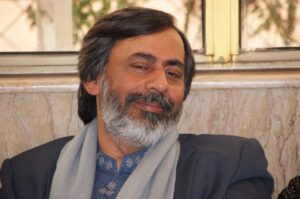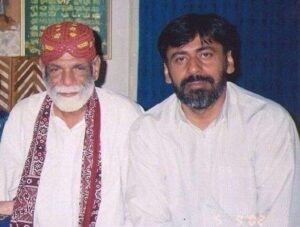Cure for knee pain
Introduction
Knee pain is a common complaint that affects people of all ages. It can be a source of significant discomfort and can limit one’s ability to perform everyday activities. This article delves into understanding knee pain, its causes, management strategies, and introduces “The Ultimate Remedy,” an innovative audio therapy as a complementary treatment.
Introduction to Knee Pain
Knee pain can vary in intensity, frequency, and duration. It may be a result of an injury, such as a torn ligament or cartilage, or it could stem from medical conditions like arthritis, gout, or infections. Understanding the specific cause of knee pain is crucial for effective treatment and management.
Understanding Of Knee Pain
Knee pain may present itself in various forms, including:
Sharp, acute pain from an injury.
Dull, chronic ache from conditions like osteoarthritis.
Swelling and stiffness in the knee joint.
Redness and warmth to the touch.
Weakness or instability in the knee.
Popping or crunching noises.
Recognizing these symptoms is important for early intervention.
Causes of Knee Pain
Knee pain can arise from several different causes:
Injuries: Such as ligament tears, meniscus tears, or tendonitis.
Mechanical Problems: Including dislocated kneecap, or issues with hip or foot alignment affecting the knee.
Arthritis Types: Osteoarthritis, rheumatoid arthritis, and gout can cause knee pain.
Other Conditions: Such as patellofemoral pain syndrome or Baker’s cyst.
Identifying the underlying cause is key to choosing the appropriate treatment.
Management of Knee Pain
Effective management of knee pain involves a combination of medical and self-care strategies:
Medication: Pain relievers and anti-inflammatory drugs can alleviate pain and swelling.
Physical Therapy: Exercises to strengthen the muscles around the knee can make it more stable.
Injections: In some cases, corticosteroid injections can help reduce symptoms.
Surgery: For severe cases, procedures like arthroscopic knee surgery or knee replacement may be necessary.
The “Ultimate Remedy” An Alternative Approach
“The Ultimate Remedy” presents a novel approach to complementing traditional knee pain treatments. This unique form of audio therapy uses sound frequencies and intentional focus to promote healing and alleviate knee pain.
How to Use The Ultimate Remedy
Download the Audio: Access The Ultimate Remedy audio from our website, with links provided for easy download.
Listen According to Instructions: Follow the guidelines for listening to achieve the best therapeutic outcome.
Support and Testimonials: For any inquiries or additional support, contact help@mastmasthealers.com. Testimonials are available to understand the effectiveness of this therapy.
Benefits of The Ultimate Remedy
Healing Sound Frequencies: The audio employs specific frequencies that may aid in pain relief and reduction of inflammation.
Focused Intention: Combining sound with a focused intention to heal can enhance the overall therapeutic experience.
Conclusion
Knee pain, while common, can be effectively managed through a combination of medical treatments, physical therapy, lifestyle modifications, and innovative approaches like The Ultimate Remedy. Embracing a holistic approach to knee pain can lead to better outcomes and improved quality of life.
Happy Patients
Years since day one
%
Satisfaction
Testimonial
How to Listen to the Ultimate Remedy:
Download the Ultimate Remedy audio from our website or app. It’s free and accessible to all.
- Choose a quiet, comfortable space where you won’t be disturbed.
- Close your eyes and visualize yourself in the presence of your higher power or the essence of the universe.
- Listen to the audio with great concentration and closed eyes.
- After the audio is finished, open your eyes and take half a glass of water.
- Close your eyes again and say “your name” or a word that represents your belief (such as “God”, “Universe”, or “Love”) three times in your heart.
- Drink the water with closed eyes in three sips.
- For optimal results, it’s recommended to listen to the Ultimate Remedy three times a day (morning, evening, and before sleeping) for seven consecutive days.
About the Creator – Syed Safdar Hussain Bukhari
Introduction and Early Life
Syed Safdar Hussain Bukhari, also known as Kakian Wali Sarkar, was a unique example of kindness, devotion, and tenacity. Born on May 6th, 1940, he dedicated his life to serving humanity and providing relief to those suffering from various ailments.

Social Work and Spiritual Journey
Between 1960-1980, he engaged in social work by undertaking road repairs, establishing schools, and arranging medical supplies in Lilla Town. In 1990, he left his ancestral home and family wealth to move to Lahore, where he comforted the depressed and saddened through mystic dance and music.
The Ultimate Remedy
In 1998, Baba Bukhari’s research led to the discovery of “The Ultimate Remedy,” a blessed audio that he believed could cure physical, psychological, spiritual, and supernatural problems. The remedy involved listening to the audio three times a day for seven consecutive days, followed by a specific water ritual. This method claimed to cure various ailments, including coronavirus, AIDS, cancer, drug addiction, worldly problems, and psychological issues.
Legacy and Death
Baba Bukhari’s research and unconditional love left a lasting impact on humanity, providing positive thinking, peace of mind, health, fearless life, and an example of love and compassion. He passed away on February 8th, 2005, leaving behind a legacy of healing through “The Ultimate Remedy.”

His spiritual successor is Syed Baba Jaan
According to Baba Bukhari (RA), his spiritual successor is Mr. Shakir Uzair, also known as Syed Baba Jaan . As the chosen heir to Baba Bukhari’s spiritual legacy, Syed Baba Jaan carries forward the teachings and practices that have been passed down through generations. Dedicated to serving humanity and promoting healing, Mr. Shakir Uzair continues to spread the message of love, compassion, and the transformative power of the Ultimate Remedy to help countless individuals in their journey towards holistic wellness and personal growth.

